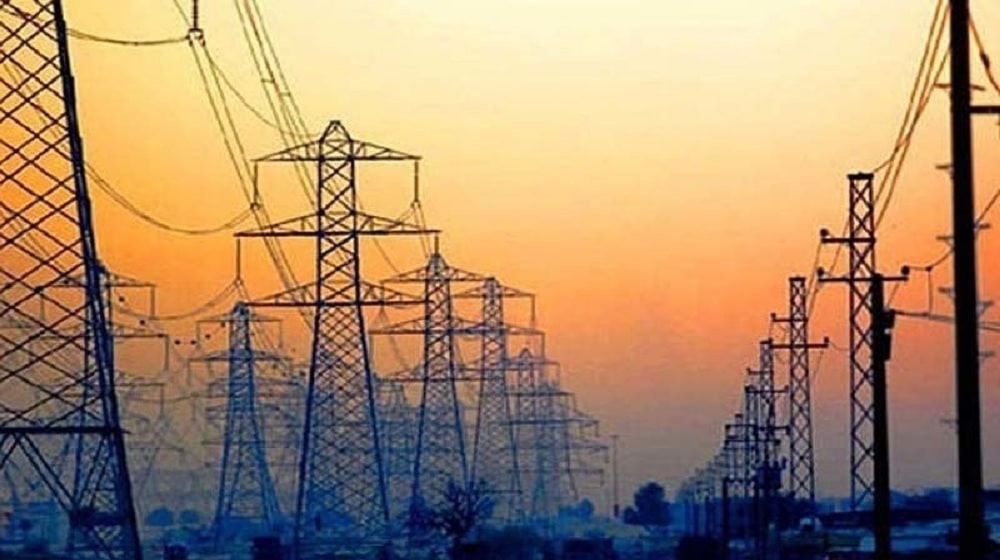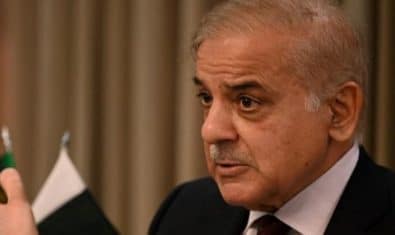By Dr. Shahab Qureshi
I have written this article purely to analytically assess and provide conclusions, with the intention to help policy makers appreciate the current status of power sector reforms that are ongoing since 1994.
My assessment is wholly based on publicly available data and information. I do not claim to have intimate knowledge of the reforms or the sector itself. It is possible that some of the information, that I had access to, is outdated and not relevant.
As such despite my best efforts, I do apologize in advance of any unintentional misrepresentation in this article.
Electricity being an essential commodity, the power sector has traditionally been state owned almost all around the world. A power utility is comprised of 4 core businesses; Generation, Transmission, Distribution and Retail.
Traditionally state owned vertically integrated utilities owned and operated all four business units as single business operation.
Industry reforms were considered when it was established that lack of competition in the sector was resulting in lack of innovation and improvement in operational efficiencies. In search of opportunities for competition, it was established that a seemingly monopolistic power utility does contain potential for competition, if four core business units are “unbundled”. For example, the generation and retail businesses offer level playing field for interested investors to invest and compete.
In contrast, it is physically as well as economically not possible to replicate power networks (transmission and distribution businesses). Hence the network business units are considered “natural monopolies” and are regulated through a credible regulatory regime.
As such among the four business units of a power utility, 2 are competitive and the other 2 are regulated, as explained below.
Power Generation
A number of investors can build power stations and supply their generation to meet demand. These generators compete with each other on price of electricity to sell electricity in a “wholesale market” operated by a system/market operator.
The market operator seeks “bids” from generators to meet forecasted demand, with lowest bidder called to supply power. With competition at hand, the generators find possible ways to reduce costs and minimize risk to their revenue earnings through various financial instruments, typical used in financial markets, e.g. hedging contracts with retailers, futures selling etc.
This incentivizes innovations that helps reduce price of electricity through competition, while safeguarding the investment of generators and making it attractive for new entrants to make investment in new generation plants.
Transmission and Distribution Networks
As mentioned, power networks are natural monopolies and thus cannot be replicated. As such, the monopolistic power of the “owner” of such network is kept in check through an active regulator, who ensures that the network use of services (NUOS) charges claimed by network owner, are reasonable and fair, and that the network is available to all stakeholders without discrimination and bias due to business interests and conflict.
While the regulator safeguards the interest of network users and ensures level playing field, it also makes sure that the return on investment for network owner is attractive enough to draw investment for future network augmentation and improvement.
With such intervention of regulator, the sellers (generators) and buyers (retailers and customers) transmit power from seller to buyer using the network by paying NUOS charges to the network owner, as determined/set by the regulator.
In the absence of competition, the role of regulator is extremely critical to ensure that NUOS charges create win-win situation for all.
Electricity Retailers
In principle, the electricity retailers purchase electricity from the competitive wholesale market and sell it to the customers within various distribution networks, along the way adding NUOS charges and their own profit to the wholesale price of electricity.
The retailers are power traders registered with market operator after fulfilling some basic requirements. As such there can be a number of retailers within a distribution network, actively seeking to recruit customers by offering variety of pricing options as well as other value added services, thereby making power retail to be a competitive business. As such while regulator (or a different authority) may introduce some general market rules and compliance requirement, the price and tariff offered by retailers remains a private business between retailer and customer which is outside the control of the regulator.
Driven by competition, the retailers develop innovative ways to reduce operational costs as well as minimize price shocks through innovative financial instruments e.g. hedging contracts with generators etc.
With such role of the four power utility businesses, the unbundled power sector introduces competition and regulated natural monopolies that results in improvement in operational efficiency of all four utility businesses, ultimately resulting in reduction in price of electricity.
This is the true intention of structural reforms of power industry, to create competition and subsequently stimulate improved operational efficiency through business and technological innovations and improvements. In terms of deployment, generally the state owned vertically integrated utility is broken down into four business units, still owned by the state, but operated as independent business entities.
The newly established businesses and electricity market is operated and core inefficiencies addressed over time, as these businesses operate. Once certain level of business maturity is achieved, the business units are privatized or converted into autonomous business entities outside the control of state.
Review of Structural Reforms in Pakistan’s Power Sector
Having developed foundational understanding of the purpose and intention of power sector restructuring from state owned monopolistic single entity, to multiple competitive as well as regulated business entities, let’s examine Pakistan’s experience with such transition.
Pakistan introduced Power Sector reforms in 1994 with admission of IPPs, and by 1997 the sector was unbundled into 4 state owned GENCOs, 1 TRANSCO, and 9 DISCOs (2 were inducted later), and establishment of industry regulator NEPRA. The Karachi DISCO, KESC was privatized in 2005.
Since then various failed attempts were made to privatize other DISCOs, and eventually the privatization plans shelved following controversy related with K-Electric privatization experience.
The single buyer model has persisted, since sector restructuring, and CPPA was established in 2015. I presume initially such role was played by NTDC.
The CPPA purchases power from generators and supplies to DISCOs, most likely at same rate with some adjustments for each DISCO. The tariff rates of DISCOs are determined by NEPRA, and are uniform across the country. As such DISCOs neither control the wholesale price of electricity at which they purchase electricity neither the retail price at which they sell electricity.
The line losses of DISCOs vary in a very broad band, from single digit value for some DISCOs to as high as 30+% for others. Since DISCOs are still state owned, following the government services rules of seniority and promotions, the CEO of a DISCO is almost always the most senior chief engineer in the company.
Based on publicly available data I can draw the following conclusions:
- It might have been part of the original plan to eventually rollout full-scale competition with a wholesale spot market, where GENCOs (including IPPs) would sell electricity in competition with each other, which would bring the price of electricity down. However, even after 23 years since the restructuring began, nothing of that sort has been achieved.
- In the absence of a competitive generation market, NEPRA appears to be regulating each and every entity within the power sector; state owned GENCOs and IPPs, TRANSCO, DISCOs and market operator (CPPA). In principle a regulator’s primary scope is to regulate natural monopolies. In the absence of a competent body that formulates and implements market rules, often the regulator assumes this position. However, intervention of a regulator in perfectly competitive area of the sector, to the tune of determining pricing structures and rates, is beyond comprehension. Yet while NEPRA appears to be the regulator, it is the federal government which ultimately decides tariff structure and rates, which effectively kills the very purpose of having a regulator.
- Retail business of power sector has been merged with distribution network business. This does not make sense as retail business offers competition, while network is a natural monopoly. Merging a competitive business with a regulated business, has resulted in lost opportunities for improvement due to competition in retail. Furthermore, while it may be ok to have senior engineer(s) run a network business, it is certainly not ok for technical staff to run a purely financial business i.e. retail sales of electricity. Separating network from retail, might help to privatize the network business, while state owned entities can continue to run loss making retail businesses until the time structural inefficiencies are resolved.
- It appears that DISCO tariffs are determined based on assumption of 100% recovery, with some allowance to reasonable line losses. There appears to be no mechanism in place on how to separate technical and non-technical losses and how DISCOs can be penalized for non-technical losses. These are still state-owned entities, as such any penalty imposed has to be paid by the state and certainly not by the DISCO itself. Consequently, power theft (non-technical losses) is rife in some DISCOs; notably; HESCO, PESCO, QESCO, SEPCO and TESCO. Resulting in substantial shortfall in expected revenue, which in turn results in inability of DISCOs to pay the due cost of power they received to CPPA. Which in turn fails to pay the GENCOs, resulting in hideous monster of Circular Debt which has greatly impeded any further development in power sector.
- Integrated DISCOs (retail and distribution network businesses combined) are intended to operate as business entities. However, run by hard-core engineers (no offence as I myself am an electrical engineer), who lack business acumen and profit making objectives, these companies are operated more like typical essential services utilities. There is no regard to finding business opportunities or improving operational efficiencies to improve financial condition of the companies. I understand that the only profit-making DISCO (K-Electric) is run by pre-dominantly business executives.
- Since competition and privatization of unbundled power sector has not materialized, creation of so many new organizations must have increased the administrative costs multifold. Add to this the increased operational inefficiency due to lack of competition and lack of objectivity of profit making, I can imagine the operational costs must have sky rocketed. Personally, I’d certainly compare the difference in operational costs before and after reforms and their share in overall cost of production and supply of power.
- It appears that with the passage of time, the original plan for reforms is lost. The original architects of reforms don’t exist anymore and the newcomers have absolutely no idea what to do. Twenty-three years is a way too long a period to initiate reforms and not materialize the intended targets. The experiment to remove operational inefficiencies in the state-owned single utility (WAPDA) seem to have backfired and resulted in amplifying the operational inefficiencies with the creation of greater number of state-owned enterprises that lack vision and intent of power sector reforms.
It is therefore important that our policy makers get back to the drawing board, reassess the current state of power sector, establish achievable and tangible objectives, and produce a workable and realistic detailed roadmap to bring the power sector to a functional and profitable state, that can fuel national economic growth. The current state of the power sector is neither old inefficient state owned vertically integrated system, nor fully unbundled competitive business oriented efficient system, but rather a half-cooked meal.
I can see two options; 1. rollback the reforms and live with old inefficient state-owned vertically integrated system where all inefficiencies and faults were lumped within one organization, 2. Be assertive and move on with reforms and implement the original plan of a competitive and most probably privatized market to realize the true benefits of reforms.
Half-cooked meal is neither healthy nor desirable!



























Sir. excellent!! I read your first article on power sector which was generalized but i believe, the whole point was not to give away the plan i am assuming. Your knowledge, being not in Pakistan, still is pretty spot on as i live here and i can almost guarantee you that as a layman, not much has changed. Harsh reality but you have stated the facts. Without knowing the internal agreements and data, you article is very spot on, hence you had to draw some assumptions. Hope and prayers for you. well done sir!
Thank to Bhutto for all this, nationalization of power plants, transmission systems and distribution network brought Pakistan to all this. Then thank again to jiala party for keeping all people on jobs who were their party workers.
UMM! didn’t bhutto died in ’77 & Wapda was disbanded in ’97? 40 years of BOOTS rule & still nothing to show for. that’s your LUMBER ONE policy makers to blame for……….
جاھل انسان فوج نے ڈیم بنانے۔ تمہارے بھٹو نے کیا کیا؟ ایک بوٹ تیرے سر پر بھی رکھ دیتے تو اچھا ہوتا!
PPP was the evil who’s party is even against the dams and did the ipp contacts which destroyed all Pakistani industry.
A number of investors can build power stations and supply their generation to meet demand. These generators compete with each other on price of electricity to sell electricity in a “wholesale market” operated by a system/market operator.
The two culprits of this “power crises and disastrous situation” of Pakistan are “nationalization policy” of Bhutto and corrupt implementation and continuation of this policy from government officials including WAPDA in Islamabad & Lahore. Any reform in this sector will be resisted and ultimately will be failed due to these “mafias”.